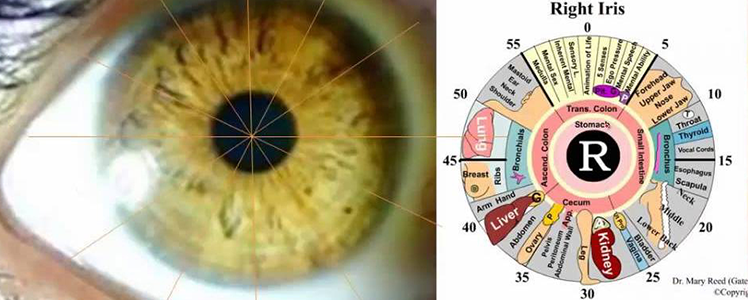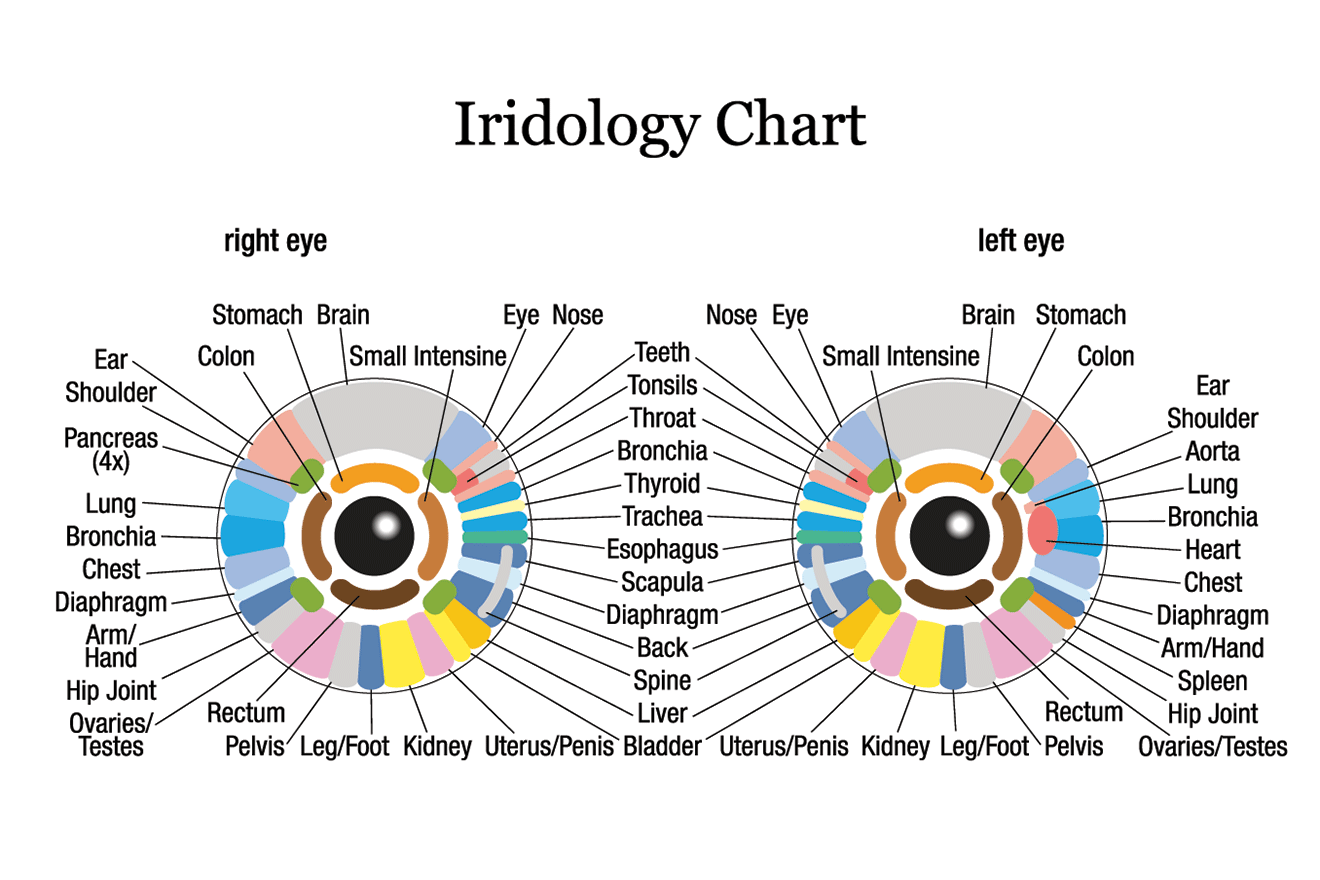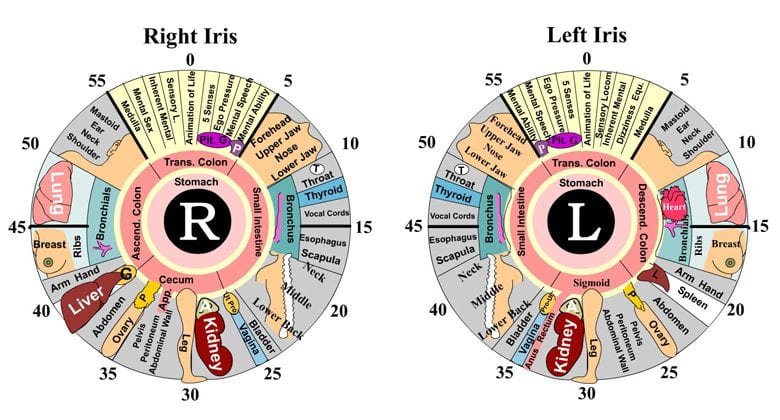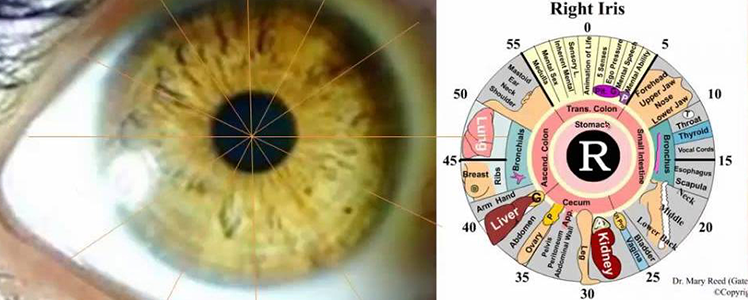Address
6050 N 9th Ave Suite D Pensacola FL 32504
Work Hours
Mon: 10am – 6pm
Tues: 10am – 6pm
Wed : 9am – 4pm
Thurs: 9am – 12pm
Fri - Sat- Sun: Closed
Address
6050 N 9th Ave Suite D Pensacola FL 32504
Work Hours
Mon: 10am – 6pm
Tues: 10am – 6pm
Wed : 9am – 4pm
Thurs: 9am – 12pm
Fri - Sat- Sun: Closed

If you’ve ever wondered how Iridology works and what it entails, look no further. Certified Iridologist and Natural Health Advisor, Holly Gibson of Emerald Coast Holistic Health, is here to shed light on the basics. With 9 years of experience in the alternative health field, Holly is passionate about helping individuals achieve their best health and providing wellness measures for the whole family. In a Health and Wellness consultation, she takes the time to understand your concerns, discuss your ailments in detail, and develop a plan tailored to your needs. With her expertise and guidance, you can find solutions for ongoing health concerns and take preventive measures for your overall well-being. Look no further for a comprehensive approach to holistic health.
Iridology is a non-invasive diagnostic practice that involves studying the patterns, colors, and other characteristics of the iris to gain insights into a person’s overall health and well-being. It is based on the premise that the iris is connected to the various organs, tissues, and systems of the body, and that by examining it, one can identify potential health issues and assess the overall state of a person’s health.
The practice of iridology can be traced back to ancient cultures such as the Egyptians, Greeks, and Chinese. However, it was not until the late 19th and early 20th centuries that iridology began to develop into a more systematic approach to health assessment. The credit for modern iridology goes to a Hungarian physician named ignaz von peczely, who first observed the relationship between specific areas of the iris and the corresponding organs within the body.
Iridology is based on three main principles. The first is the concept that the iris is connected to different parts of the body through nerve connections. Second, it assumes that changes in the structure and color of the iris can reflect health conditions elsewhere in the body. Finally, iridology operates on the principle that through careful observation and analysis of the iris, a trained iridologist can identify potential health issues and provide personalized recommendations for improving overall health.
The iris is the colored part of the eye that regulates the amount of light entering the eye through the pupil. It is composed of fine muscular fibers and pigment cells that give the iris its unique color. The iris has a highly complex and intricate structure, consisting of various zones, fibers, and markings that can provide valuable information about a person’s health.
The iris is not just a beautiful part of the eye; it serves as a map of the body’s overall health. According to iridology, different areas of the iris are thought to correspond to specific organs, tissues, and body systems. By carefully examining these areas and noting any abnormalities or variations in color, texture, or markings, an iridologist can gather valuable information about a person’s health status.
To aid in the interpretation of the iris, iridologists use an iridology chart. This chart divides the iris into different zones, each representing a specific part of the body. By referring to the chart, an iridologist can pinpoint any areas of concern and determine which organs or systems may require attention. The chart acts as a tool for analysis and helps guide the iridologist in developing personalized health plans for their clients.

This image is property of images.ctfassets.net.
A typical iridology session starts with an initial consultation where the iridologist gathers information about the client’s medical history, lifestyle, and current health concerns. This information helps the iridologist understand the context in which the iris examination will take place. Next, the client’s eyes are examined using a specialized magnifying tool called an iridoscope, which allows the iridologist to observe the iris in detail.
During the examination, the iridologist carefully observes the color, pattern, texture, and other characteristics of the iris. Any irregularities or abnormalities in specific zones of the iris are noted and compared against the iridology chart. This process involves a keen eye for detail and the ability to make connections between the observations and potential underlying health issues. The iridologist may also pay attention to changes in the iris over time to track the progress of certain health conditions.
One important aspect of iridology is the identification of pupil zones. These are specific areas in the iris around the pupil that can provide insights into a person’s constitutional strengths and weaknesses. Depending on the color, shape, and markings of these zones, an iridologist can assess the individual’s overall health status and develop appropriate recommendations for maintaining or improving well-being.
Iridology offers a holistic approach to health assessment by considering the body as a whole rather than focusing on individual symptoms or conditions. By examining the iris, an iridologist can identify underlying imbalances or weaknesses that may contribute to a person’s health concerns. This allows for a comprehensive understanding of the individual’s health status and the development of personalized health plans tailored to their specific needs.
One of the significant advantages of iridology is its potential for early detection of health issues. By identifying potential problem areas in the iris, an iridologist can bring attention to areas of the body that may benefit from closer monitoring or proactive interventions. Early detection can lead to more timely medical interventions or lifestyle adjustments, potentially preventing the progression of certain conditions or improving treatment outcomes.
Iridology promotes personalized health plans that take into account the individual’s unique constitution and health needs. By identifying constitutional strengths and weaknesses through iris examination, an iridologist can tailor recommendations for diet, lifestyle changes, and other natural interventions to support the individual’s overall health and well-being. These personalized plans empower individuals to take an active role in their own health and make informed decisions about their wellness journey.

This image is property of www.integrativenutrition.com.
Constitutional assessment is a key technique used in iridology to determine an individual’s overall constitutional strengths and weaknesses. By examining the iris, an iridologist can identify inherent qualities and predispositions that may influence an individual’s health. This information helps guide the development of personalized health plans and allows for a more comprehensive understanding of the individual’s well-being.
Iridology recognizes different constitutional types based on the observed characteristics of the iris. These types, such as lymphatic, hematogenic, biliary, or nervous, provide additional insights into how an individual’s body functions and responds to various health challenges. Recognizing constitutional types can help tailor recommendations and interventions to better support the body’s unique needs.
Sclerology is a technique used in conjunction with iridology to gather additional information about a person’s health. It involves examining the sclera, the white part of the eye, for signs such as blood vessel patterns, markings, or discolorations. Sclerology can provide further clues about organ health, emotional well-being, and potential areas that require attention.
Iridology can be integrated with conventional medical practices to provide a more comprehensive approach to health management. While iridology does not replace medical diagnosis or treatment, it can offer additional insights and information that complement existing medical assessments. By combining the strengths of both approaches, individuals can benefit from a more holistic understanding of their health and be better equipped to make informed decisions about their well-being.
It is important to note that iridology is not a diagnostic tool and should not be used as a standalone method for diagnosing specific medical conditions. Instead, iridology offers insights into an individual’s overall health status, constitutional strengths and weaknesses, and potential areas that may require attention. It is designed to complement and support conventional medical assessments, providing a more holistic view of health.
While iridology can provide valuable insights into an individual’s health, it is not a substitute for medical examination or treatment. It is essential to consult with qualified medical professionals for diagnosis and treatment of specific medical conditions. Iridology can act as a complementary approach, providing additional information that can augment conventional medical care.
Iridology should be viewed as a complementary approach to health assessment and wellness. It can provide insights into an individual’s constitutional strengths and weaknesses, as well as potential areas that may require attention. By integrating iridology with other holistic health practices and conventional medical care, individuals can optimize their overall well-being and make informed decisions about their health.

This image is property of achs.edu.
As with many alternative health practices, iridology has faced criticism for its lack of scientific evidence. Skeptics argue that there is limited scientific research supporting the claims made by iridologists and question the validity of the practice. However, proponents of iridology highlight anecdotal evidence and the value it brings to individual experiences of health and well-being.
Iridology has often been met with opposition from mainstream medicine, which tends to favor evidence-based practices and rigorous scientific research. Skeptics within the medical community argue that the correlations between the iris and other parts of the body are not sufficiently supported by scientific evidence. As a result, some medical professionals dismiss iridology as pseudoscience.
There are ethical considerations to keep in mind when exploring iridology. It is important for individuals to seek out qualified iridologists who have received proper training and certification. Additionally, individuals should be aware of the limitations of iridology and not rely solely on its assessments but rather use it as a complementary approach to their overall health care.
When choosing an iridologist, it is crucial to consider their certification and training. Look for individuals who have completed reputable training programs and hold certifications recognized by reputable professional organizations. This ensures that the iridologist has received proper education and adheres to a code of ethics and professional standards.
Consider the experience and reputation of the iridologist before making a decision. Look for practitioners who have been practicing iridology for a significant period and have built a reputation for their expertise and professionalism. Reading reviews, seeking referrals, and researching the practitioner’s background can help ensure a positive and effective consultation.
It is important to feel comfortable and at ease with the iridologist you choose. During an iridology consultation, personal compatibility plays a crucial role in establishing a trusting and open relationship. It allows for better communication, understanding, and collaboration in developing personalized health plans. Trust your instincts and choose an iridologist with whom you feel a connection.

This image is property of www.atmanjai.com.
An iridology consultation usually begins with an initial assessment, where the iridologist gathers information about your health history, lifestyle, and current concerns. This information helps establish a context for the examination and enables the iridologist to understand your unique health needs.
Next, the iridologist will conduct a detailed examination of your irises. They will use a magnifying tool, such as an iridoscope, to observe the iris in close detail. During this examination, the iridologist will carefully observe the color, patterns, fiber structure, and other characteristics of the iris to identify any abnormalities or variations.
Based on their observations, the iridologist will analyze your iris and compare it to the iridology chart to identify potential areas of concern. They will then provide you with personalized recommendations for improving your overall health and well-being. These recommendations may include dietary changes, lifestyle modifications, herbal remedies, and other natural interventions specific to your constitutional strengths and weaknesses.
Iridology can be integrated with nutrition and diet to support overall health. By identifying constitutional strengths and weaknesses through iris examination, an iridologist can recommend dietary adjustments tailored to an individual’s specific needs. This integration allows for personalized nutrition plans that optimize overall well-being.
Herbal medicine can be incorporated into iridology practices to further enhance health outcomes. By identifying areas of the body that may require support, an iridologist can recommend herbal remedies that target specific imbalances. This integration allows for a holistic approach to health, utilizing the healing powers of nature in conjunction with iridology assessments.
Acupuncture can complement iridology by targeting specific areas of the body identified through iris examination. By stimulating specific acupuncture points, an acupuncturist can address imbalances or weaknesses highlighted in the iris, promoting overall harmony and well-being. This integration offers a synergistic approach to health and wellness.
Massage therapy can be integrated with iridology to support the body’s natural healing processes. By addressing areas of the body that may be indicated by the iris examination, a massage therapist can provide targeted relief and relaxation. This integration promotes overall well-being, helping individuals achieve balance and harmony in their physical and emotional health.
Stress management techniques, such as meditation, yoga, or breathing exercises, can be integrated with iridology to support overall well-being. By identifying areas of the body that may be impacted by stress through iris examination, an iridologist can provide recommendations for stress reduction techniques tailored to individual needs. This integration allows for a holistic approach to health, addressing the mind-body connection.
In conclusion, iridology is a non-invasive practice that utilizes the iris as a map of the body’s overall health. While it should be viewed as a complementary approach, iridology can offer valuable insights into an individual’s constitution, potential health issues, and personalized recommendations for improving well-being. By integrating iridology with other holistic health practices and conventional medical care, individuals can optimize their overall health and make informed decisions about their wellness journey.